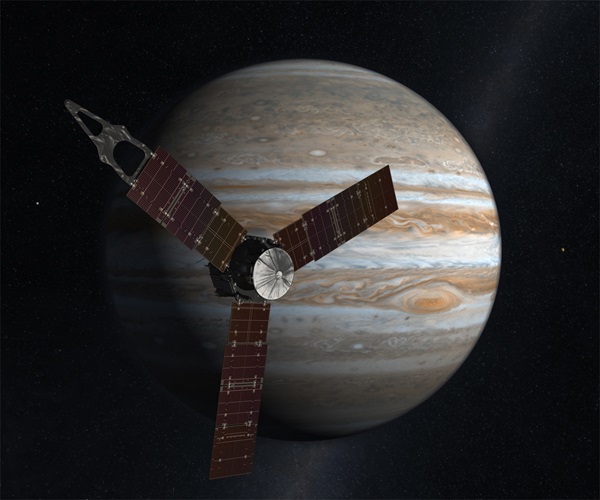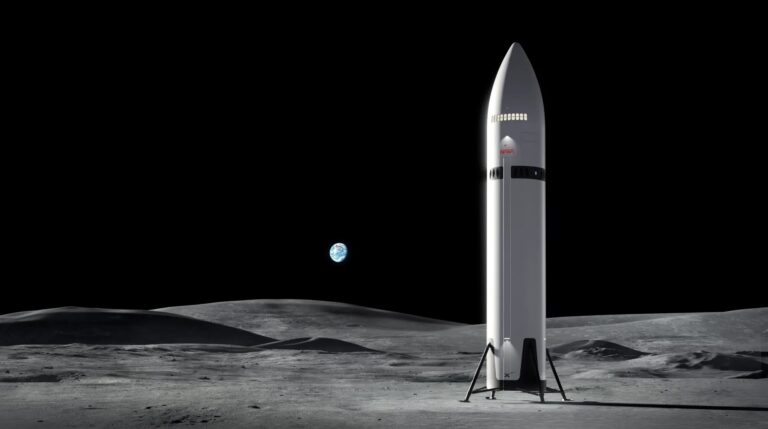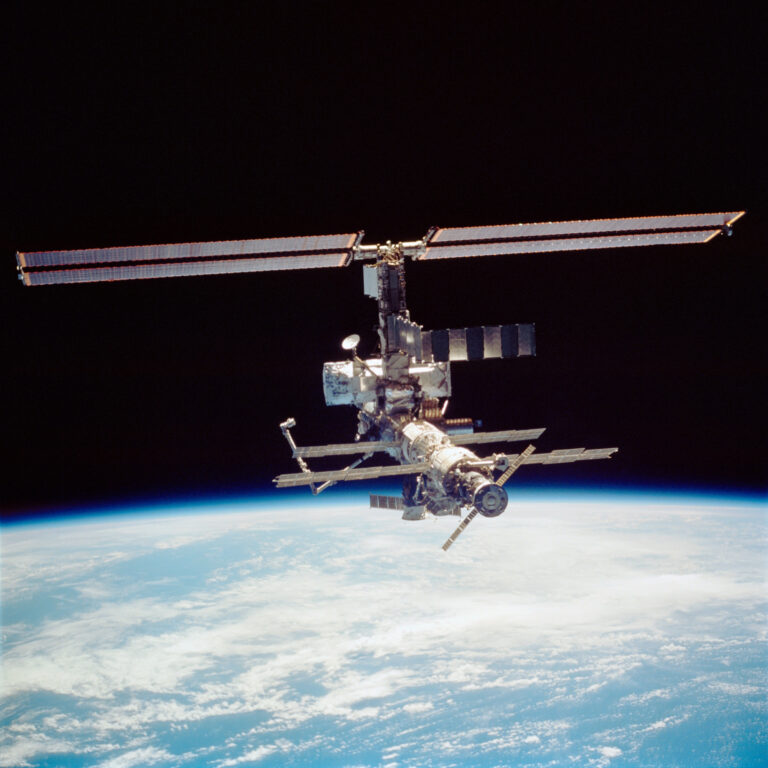Key Takeaways:
A sturdy little spacecraft called Juno is about to fall into the tight grip of Jupiter, the biggest planet in the solar system, to begin a 20-month, 37-orbit mission. On the evening of July 4, Juno will fire its main engine for 35 minutes, placing it into an eccentric polar orbit around the gas giant.
At its closest approach, Juno’s orbit will pass a mere 2,900 miles (4,667 kilometers) from Jupiter’s cloud tops, closer than any previous spacecraft, and it will be moving at roughly 129,000 mph (65 kps), faster than any previous manmade object. At that altitude, the probe will be subjected to the harshest radiation environment in the solar system. Jupiter’s powerful magnetic field surrounds the planet with a doughnut-shaped field of high-energy electrons, protons, and ions traveling at nearly the speed of light.
“We need to go that close in order to get the special measurements that we desire in order to learn about Jupiter’s formation and how it works inside the planet,” says Scott Bolton, principal investigator for the Juno team at the Southwest Research Institute in San Antonio.
The radiation zone is not the only extreme aspect of Jupiter. In fact, nothing about going to Jupiter is routine, according to Bolton. Juno’s extremely eccentric polar orbit minimizes the time Juno spends in Jupiter’s harsh environment and has another advantage.
“A polar orbit allows us to use Jupiter’s rotation to map the entire planet on successive passes,” says Steve Levin, Juno project scientist from JPL. A polar orbit also allows Juno to measure Jupiter’s magnetic field at all latitudes in its investigation of the planet’s magnetosphere. This will be the strongest magnetic field a spacecraft has ever flown through, so strong it cannot be reproduced on Earth.
To protect Juno’s delicate electronic instruments, its flight computer and the electronic hearts of many of its science instruments are shielded inside a first-of-its-kind titanium vault. The vault will reduce the radiation within to 1/800th of what it is outside.
“Over the life of the mission, Juno will be exposed to the equivalent of over 100 million dental X-rays,” says Rick Nybakken, Juno’s project manager at NASA’s Jet Propulsion Laboratory (JPL) in Pasadena, Calif. Its elongated orbit minimizes the time Juno spends in Jupiter’s harsh environment and carries the craft far beyond the radiation belt the rest of the time.
Even with the vault, the quantity and energy of the radiation will cause a slow accumulation of damage.
“Over the course of the mission, the highest-energy electrons will penetrate the vault, creating a spray of secondary photons and particles,” says Heidi Becker of JPL, Juno’s Radiation Monitoring Investigation lead. “The constant bombardment will break the atomic bonds in Juno’s electronics.”










